September 16, 2024 · 10 min read
Cross-Departmental Collaboration: The Secret to Successful Enterprise Projects

Shaimaa Badawi
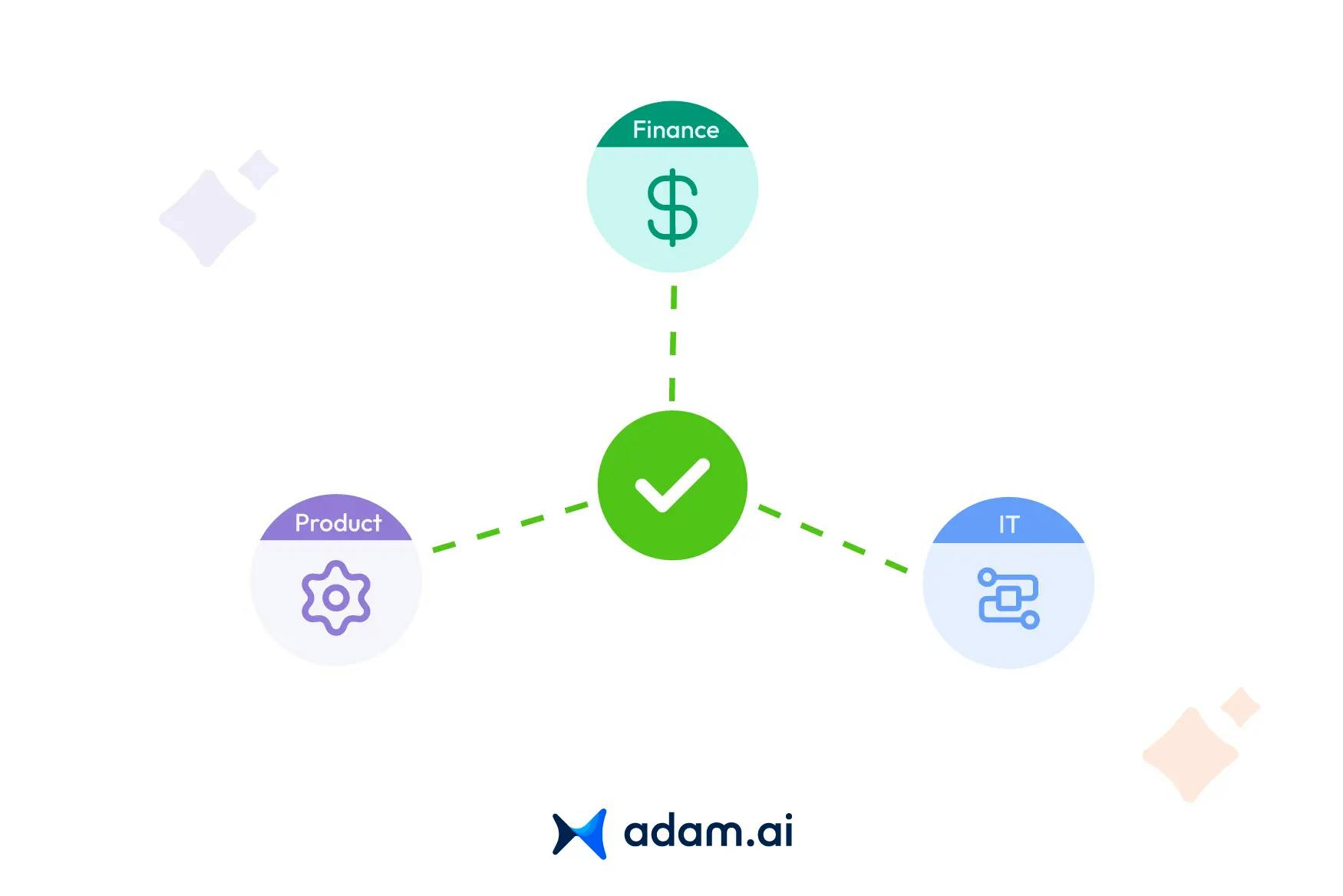
Managing enterprise projects requires more than just individual effort; it demands seamless collaboration across departments. But what makes cross-departmental collaboration so crucial? How can it help project managers, C-level executives, and board members achieve better results?
In this article, we’ll dive into the key benefits, common challenges, and best practices of cross-departmental collaboration, and explore how adopting the right strategies can lead to more successful outcomes.
What is cross-departmental collaboration?
Cross-departmental collaboration is the practice of teams from different departments working together toward a common goal. It goes beyond the traditional structure where each department focuses solely on its own tasks. Instead, this approach encourages open communication and sharing of knowledge across areas like marketing, product development, and customer support.
When departments collaborate effectively, they combine their expertise, creating stronger strategies and innovative solutions. This type of collaboration helps align various departments with the organization's larger objectives, leading to better project outcomes and overall efficiency. By working together, departments break down silos, streamline processes, and improve decision-making, all of which contribute to organizational success.
Why is cross team collaboration necessary in managing a project?
Cross-team collaboration is essential in managing a project because it ensures that every department involved contributes its expertise, leading to a more comprehensive and successful project outcome. When teams from different areas, such as marketing, development, and operations, work together, they bring varied perspectives, which helps in addressing challenges more effectively and creating solutions that benefit the entire organization.
For example, a project might require input from the technical team for feasibility, the design team for user experience, and the sales team for market alignment. Without collaboration, these departments might work in isolation, causing miscommunication, duplicated efforts, or missed opportunities. Effective cross-team collaboration ensures that everyone is aligned with the project's goals, avoids misunderstandings, and accelerates problem-solving by pooling resources and knowledge.
Furthermore, cross-team collaboration supports project managers in balancing timelines, allocating resources efficiently, and ensuring accountability across departments. It fosters a culture of transparency and shared responsibility, making it easier to meet project deadlines, deliver quality work, and achieve strategic objectives. By uniting different departments, projects are executed more smoothly, leading to improved outcomes and higher organizational success.
How to improve collaboration among cross-departments
Improving collaboration among cross-departments requires deliberate strategies that foster communication, trust, and alignment of goals. Organizations that promote effective collaboration tend to break down silos, increase efficiency, and create more innovative solutions. Here are some practical ways to improve collaboration:
- Establish clear communication channels: Implement systems that allow departments to share information easily. Whether through project management software, regular meetings, or collaborative tools, clear communication ensures that everyone stays informed and aligned.
- Define common goals: When departments understand the bigger picture and how their individual tasks contribute to the organization’s success, they are more likely to collaborate. Creating shared objectives helps teams stay focused on common outcomes.
- Encourage interdepartmental relationships: Organizing team-building activities or cross-department workshops can build stronger relationships. When people know and trust each other, they communicate more openly, which leads to better collaboration.
- Provide leadership support: Leadership must actively promote cross-department collaboration by setting examples, providing resources, and creating opportunities for teams to work together. Support from executives ensures that collaboration becomes a priority.
- Leverage collaborative technology: Tools like project management platforms or integrated software systems streamline communication, task management, and resource sharing, making it easier for different departments to collaborate effectively.
What are the key benefits of cross-departmental collaboration for c-level executives?
Cross-departmental collaboration offers significant advantages for C-level executives, as it enables a broader perspective on operations and enhances overall business efficiency. Here are some of the key benefits for executives when different teams work together effectively:
Holistic decision-making
Cross-departmental collaboration provides C-level executives with a comprehensive view of the business by bringing together insights from various departments. This helps in making more informed, well-rounded decisions that align with the overall organizational goals.
Improved efficiency and resource allocation
When departments work together seamlessly, C-level executives can better allocate resources, prevent duplication of efforts, and ensure that projects are completed on time and within budget. This streamlines processes, saving both time and money.
Fostering innovation
Collaboration encourages the sharing of different perspectives, driving creative problem-solving and innovation. For C-level executives, this results in more innovative strategies and products that give the organization a competitive edge in the market.
Enhanced strategic alignment
Cross-departmental collaboration ensures that all departments are aligned with the company's strategic objectives. This alignment is crucial for C-level executives to ensure that each department contributes to the larger goals of the organization, maximizing the effectiveness of the company’s strategy.
Increased accountability and transparency
With better collaboration, C-level executives gain greater visibility into departmental activities. This transparency leads to increased accountability, as departments become more responsible for their contributions to the overall success of the company.
Improved organizational culture
When departments collaborate effectively, it fosters a culture of teamwork, trust, and open communication. C-level executives benefit from a more cohesive and motivated workforce, which ultimately leads to improved performance across the organization.
How collaboration can be valuable to the successful outcome of a project?
Collaboration is a key driver in ensuring the success of a project, as it brings together diverse expertise and resources that contribute to a more efficient and innovative process. Here’s how collaboration adds significant value to project outcomes:
- Comprehensive problem-solving: Collaboration allows different teams to address project challenges from multiple angles. Each department brings its expertise, leading to well-rounded solutions that consider technical, operational, and strategic factors.
- Early identification of risks: When teams collaborate, potential issues are flagged earlier. Cross-department communication helps identify risks or bottlenecks that one department alone might overlook, allowing for quicker adjustments.
- Aligned objectives: Collaborative efforts ensure that everyone involved shares the same vision for the project’s outcome. This alignment reduces misunderstandings and keeps the project focused on the core objectives, preventing missteps or wasted effort.
- Resource optimization: Collaboration allows teams to pool resources, preventing duplication and ensuring that materials, tools, and personnel are used more efficiently. This results in cost savings and timely completion of project tasks.
- Enhanced innovation: By involving different perspectives, collaboration fosters creativity and encourages new ideas. This diversity leads to more innovative approaches that improve the project’s outcome and add unexpected value.
- Stronger team accountability: Collaboration increases accountability among teams. Each department feels responsible for their part in the project's success, which enhances commitment and ensures that deadlines and deliverables are met.
- Improved flexibility: With ongoing collaboration, teams are better equipped to adapt to changes in scope or requirements. This flexibility allows for smoother transitions when adjustments are necessary, minimizing disruptions to the project timeline.
What challenges do companies face with cross-departmental collaboration?
Cross-departmental collaboration can present several challenges for companies, but with the right strategies, these obstacles can be effectively addressed. Below are some common challenges and solutions:
1. Clashing goals and priorities
Different departments often have distinct goals, which can lead to conflicts when trying to collaborate. For instance, the sales team may prioritize quick results, while the product team may focus on long-term quality.
Solution: Establish clear, shared objectives that align with the company's broader strategy. Regular meetings between department heads can ensure that everyone is on the same page, working toward a common goal.
2. Communication breakdowns
Miscommunication is a common issue in cross-departmental collaboration, especially when teams use different terminologies or work in different systems.
Solution: Implement standardized communication channels and tools that facilitate real-time updates and knowledge sharing. Training employees on communication best practices can also improve clarity across teams.
3. Lack of trust between teams
Departments that don't frequently interact may lack trust in each other's capabilities, leading to reluctance in sharing information or collaborating effectively.
Solution: Foster a culture of transparency by encouraging interdepartmental relationships through team-building activities and joint projects. Leadership can play a key role by modeling trust and collaboration across teams.
4. Resistance to change
Teams accustomed to working in silos may resist collaborative efforts, fearing disruption to their established workflows.
Solution: Provide training and support to help teams understand the benefits of collaboration. Gradual implementation of cross-departmental initiatives, with clear leadership backing, can ease the transition.
5. Uneven distribution of resources
Some departments may feel overburdened or under-resourced compared to others, causing friction and slowing down collaboration efforts.
Solution: Ensure that resources are allocated fairly across departments and that workload distribution is balanced. Project managers can help monitor and adjust resource allocation based on the evolving needs of the project.
What are the best practices of cross-departmental collaboration in large organizations?
In large organizations, effective cross-departmental collaboration requires clear communication, shared objectives, and structured processes to ensure alignment across teams. Here are some best practices that can help foster successful collaboration:
1. Establish clear communication protocols
Ensure that every department knows the preferred methods for communicating across teams, whether through email, project management software, or regular meetings. Clear communication channels prevent misunderstandings and ensure that information is shared consistently.
2. Set unified goals and objectives
Align all departments with the organization’s strategic goals. When everyone understands how their work fits into the larger company mission, it becomes easier for teams to work together toward shared outcomes.
3. Define roles and responsibilities
Clearly outline each department's roles and responsibilities in a collaborative project. This prevents confusion over who is accountable for specific tasks and ensures that everyone is aware of their contributions.
4. Foster a culture of trust and respect
Encourage open communication and trust among departments. Building strong interdepartmental relationships through team-building activities, workshops, or collaborative events can break down silos and enhance cooperation.
5. Conduct regular check-ins and reviews
Schedule regular meetings to review the progress of collaborative efforts. This ensures that any challenges or misalignments are addressed early and provides an opportunity for teams to adjust their strategies.
6. Provide leadership support
Leadership should actively promote and support cross-departmental collaboration by setting an example and providing the necessary resources. Executives and managers must champion the importance of collaboration and encourage teams to work together.
7. Reward collaborative efforts
Recognize and reward successful collaborations. Acknowledging team efforts can motivate departments to continue working together and contribute to the organization’s goals.
8. Use collaborative tools
Implement project management platforms and collaboration tools that allow teams to track progress, share resources, and communicate in real time. Tools like Slack, Microsoft Teams, or adam.ai help streamline workflows and facilitate efficient collaboration.
Enhance cross-department collaboration with adam.ai
adam.ai equips project managers, C-level executives, and board members with the tools to streamline their enterprise projects, ensuring seamless collaboration and decision-making. These features are designed to improve meeting efficiency, enhance communication, and provide actionable insights, all within a secure and user-friendly platform.
- Agenda and content management: Structure your meetings for maximum productivity by creating detailed agendas that keep discussions on track. adam.ai’s agenda feature helps you cover all critical topics, reduce time wastage, and ensure efficient decision-making.
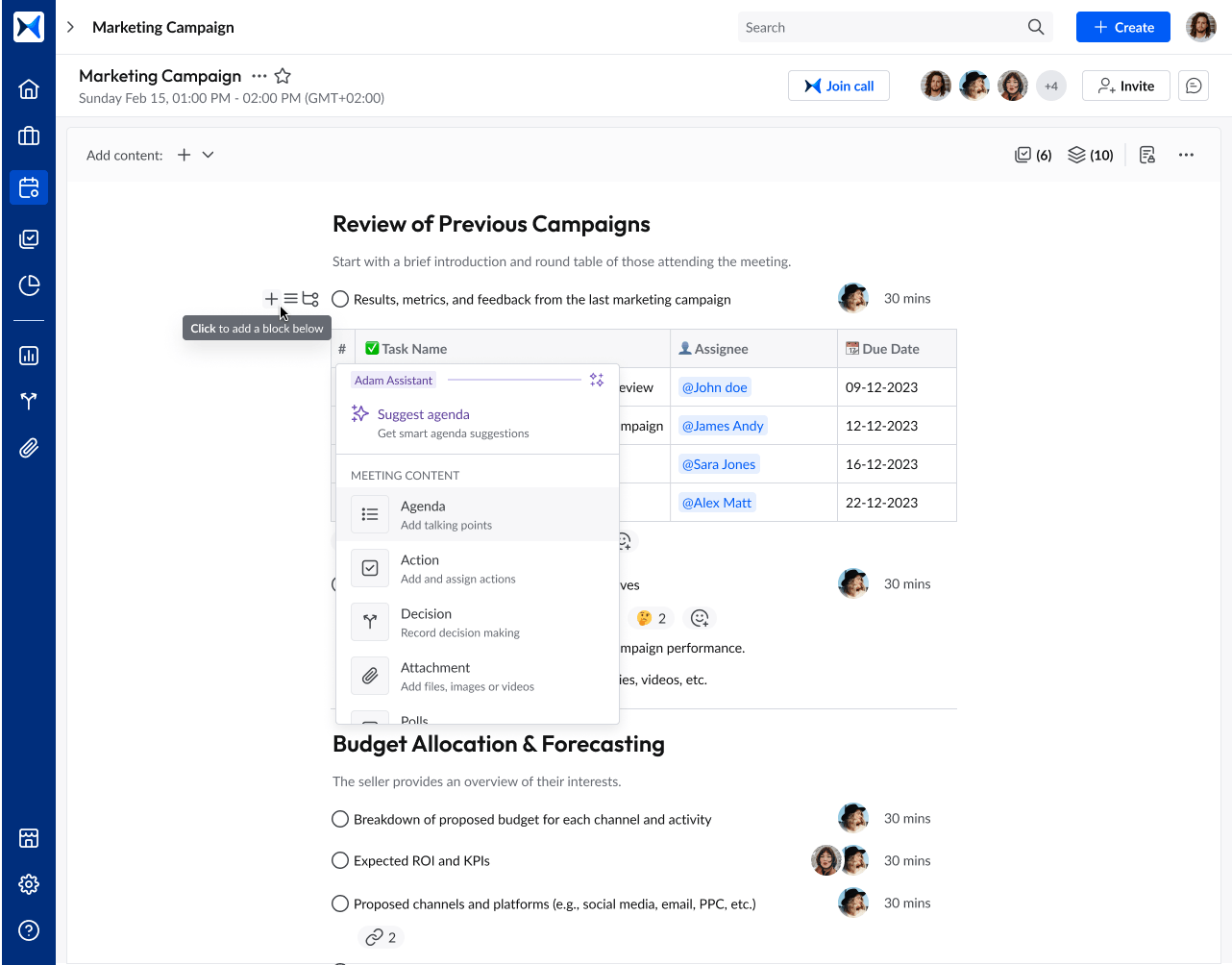
- Real-time collaboration: Engage your team in meaningful, live collaboration. With features that allow participants to comment, make suggestions, and react to ongoing discussions, you’ll foster better communication and reduce the risk of miscommunication across departments.
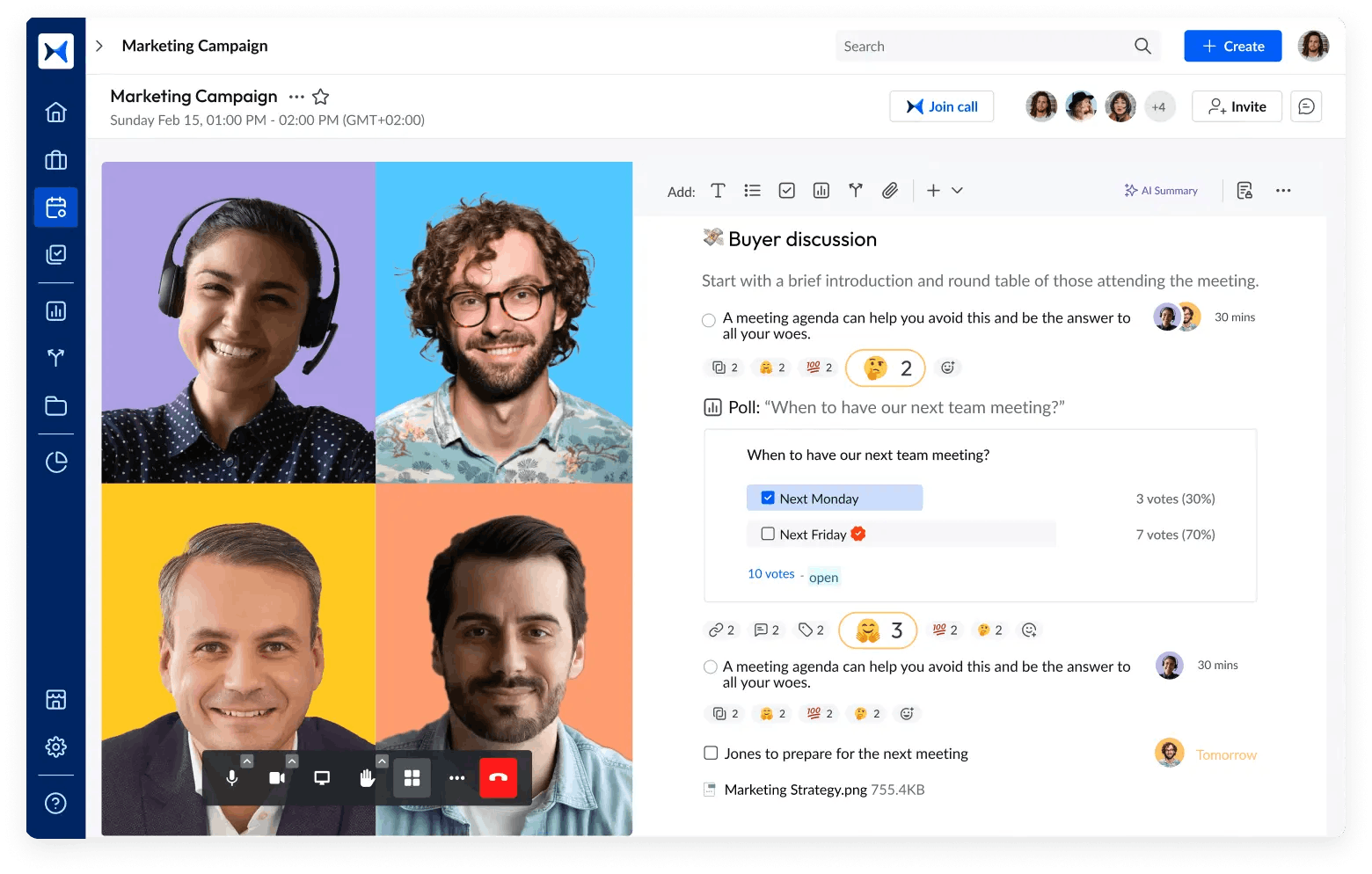
- Action item tracking: Streamline accountability by automatically assigning tasks during meetings and tracking their progress. This ensures that decisions are followed up on, helping teams meet their deadlines and prevent delays.
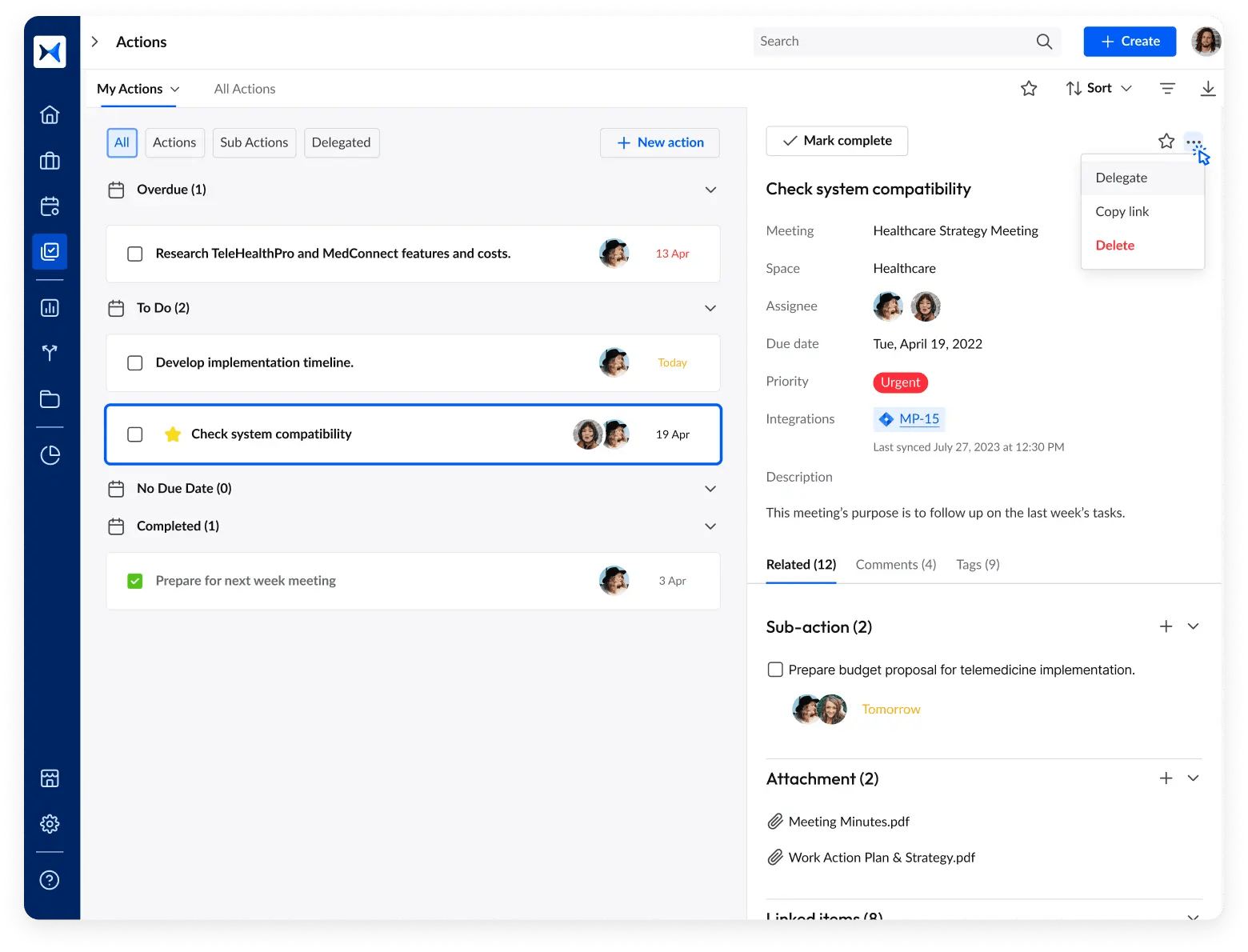
- Automated meeting minutes: Simplify your workflow with automated minute-taking. adam.ai captures key points, decisions, and action items, generating detailed meeting minutes that can be easily shared and referenced.
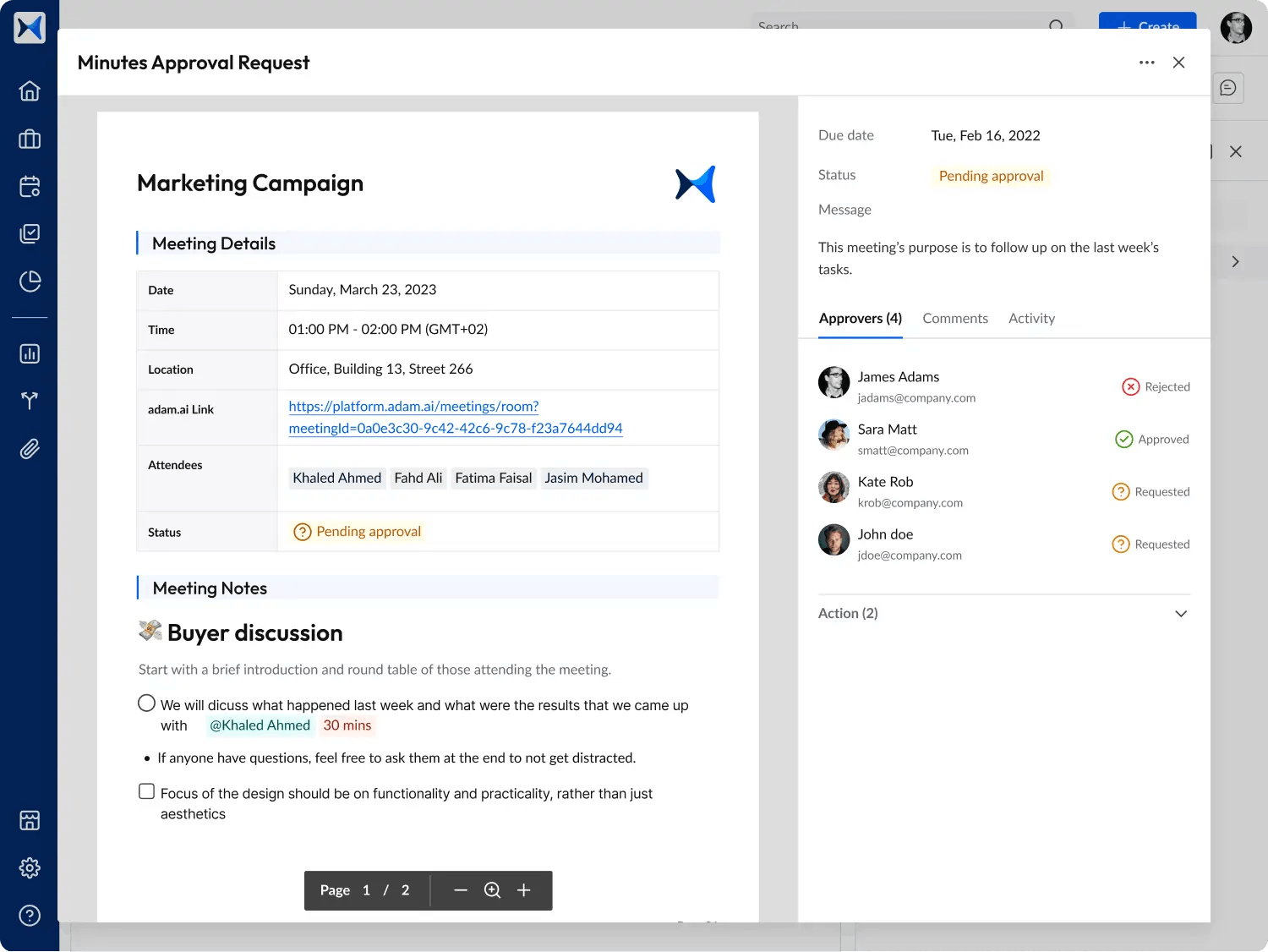
- Multi-project space management: Keep project discussions organized with dedicated meeting spaces for each project, preventing overlap and ensuring clarity. Whether managing multiple teams or departments, adam.ai makes it easy to maintain focus on each project’s goals.
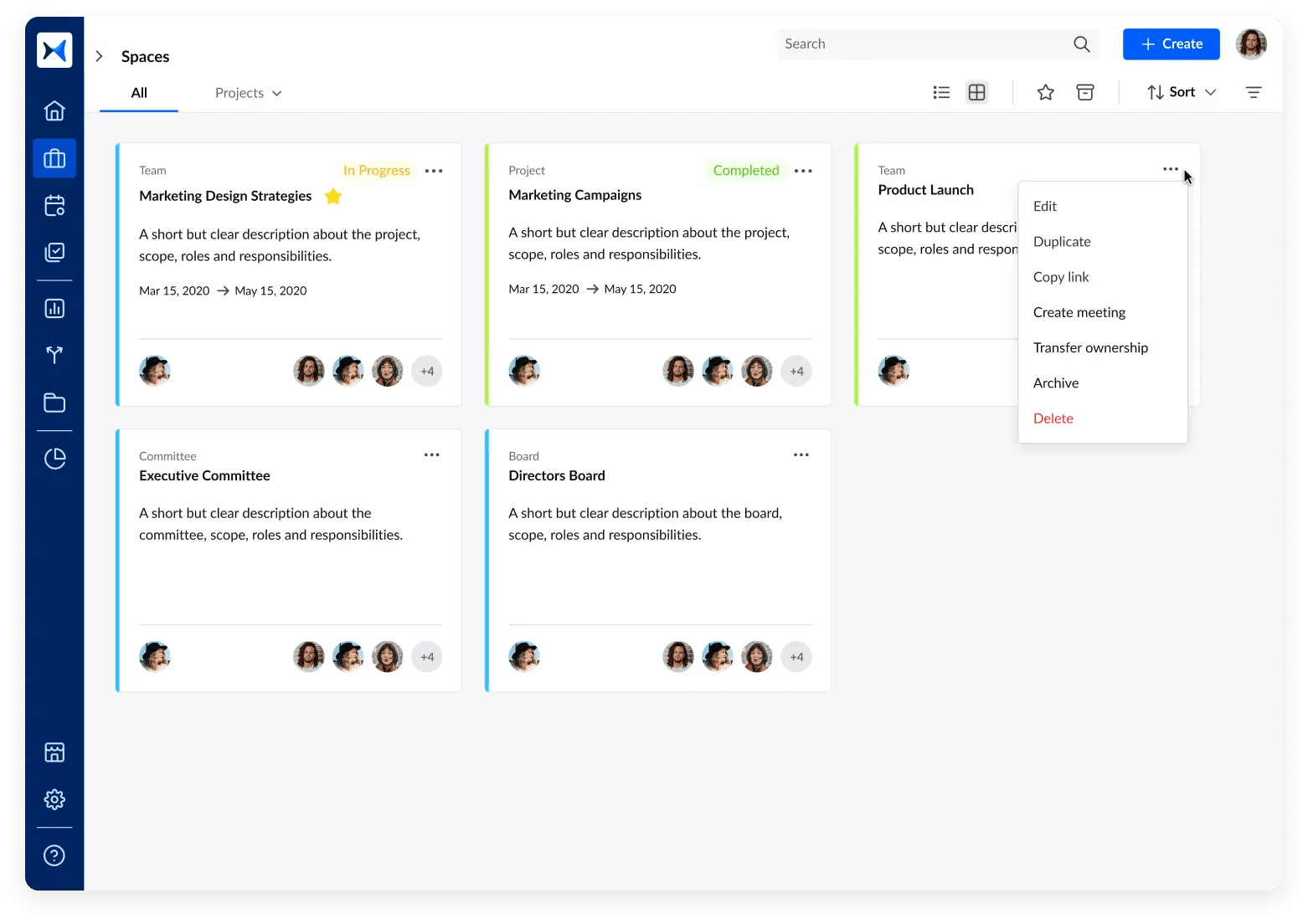
- Analytics dashboard: Use data-driven insights to monitor meeting effectiveness, participant engagement, and task completion. This allows you to continuously improve processes and optimize outcomes for enterprise-level projects.
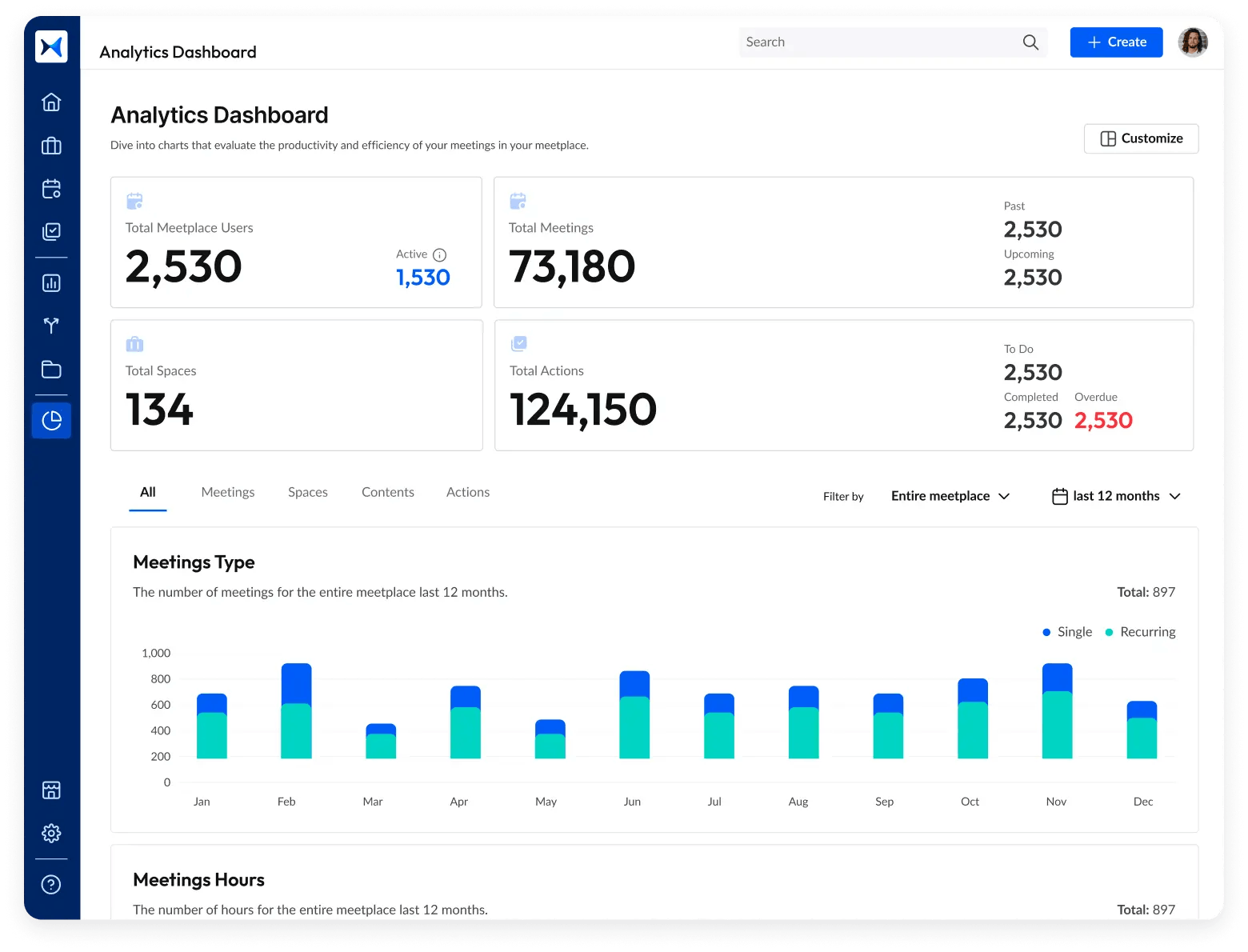
Transform how you conduct critical meetings—From meticulous preparation to effective execution and insightful follow-up, adam.ai integrates comprehensive analytics, full customization, and intuitive interfaces with powerful meeting management tools.
Easy onboarding. Enterprise-grade security. 24/7 dedicated support.
The bottom line
Cross-departmental collaboration is the backbone of successful enterprise projects. By aligning teams, enhancing communication, and fostering innovation, organizations can tackle complex challenges and achieve their goals more efficiently. With the help of modern tools designed to streamline meetings and boost productivity, companies can ensure that their projects are completed on time and with maximum impact.
And while there may be multiple solutions available, here is why adam.ai is the meeting management software platform you can trust:
- adam.ai is one of Atlassian Ventures' portfolio companies.
- In the meeting management software category on G2, adam.ai has been ranked a leader and a high performer for successive quarters in the past years.
- adam.ai has been included in the Forrester Report in the AI-enabled meeting technology landscape.
- adam.ai is trusted and used by powerful teams and organizations worldwide for all types of critical meetings, like board, committee, project management, and business development meetings.
- And most importantly, adam.ai integrates with your existing workflow, is SOC2 compliant, provides dedicated support and success, and has a free trial option.
Subscribe to adam.ai blog
Stay ahead with the latest insights—get our newest blog posts, tips, and updates sent straight to your inbox.